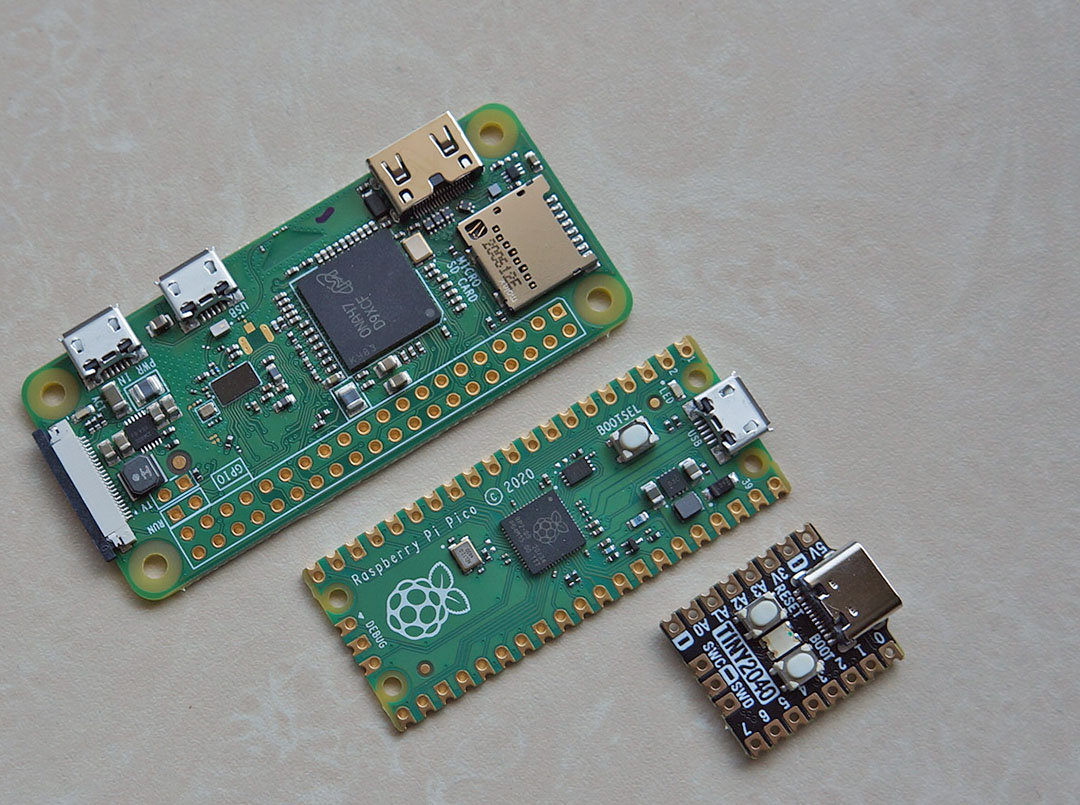Why move on if you dont have to ?
Myself I dont see a problem using a well supported device that has plenty of memory and is very easy to DIY.
Why move on if you dont have to ?
Myself I dont see a problem using a well supported device that has plenty of memory and is very easy to DIY.
Thank you for your Help!
Great info, Thank you.I have some TTGOs lying around so i will make some tests this weekend.
I think after the “Chip crisis” i will switch to the SAMD21
Thank you, this is what im searching for!
Is the lmic library running out of the box on these chips ?
If there is an Arduino core that supports boards with these MCU’s then LMIC should be able to work with it.
Depending on what DIY board you want to build you may have to create your own Board Support Package for that Arduino core.
Hi,
I found this core for the 1284 and the 4809 is the 5V arduino every development board.
I have to investigate but it should work
Thats the one.
More clock choices than the Standard UNO core.
It supports a couple of different pinout maps, I use the Bobuino one, closest to the pin numbering of a UNO\ProMini.
I’ve done some experiments with the TinyLoRa library (GitHub - adafruit/TinyLoRa: LoRaWAN Library) on attiny85’s in the past. The attiny85 only has 8 kB of flash. The atmega328p of the UNO has 32 kB.
I’d encourage you to give the atmega328p (UNO) another chance! Benefits: Cheap, robust (no problems with 5 V), a lot less complicated than the SAMD21.
I’ve invested a lot of time getting to grips with the SAMD21. Lower level stuff you’d read in the datasheets is lot easier on the AVR chips (atmega328p) than on the SAMD21.
You do need to use logic level shifters, or a shiled that has them, for the LoRa devices.
Makes a lot more sense to use 3.3V Arduinos these days.
I used his minicore extensively, MCUdude did a great work!
Oooh, that would be my favorite, but what would you do when TTN v2 shut off this year. Thats my major issue.
TinyLora is NoGo on V3.
This has been discussed on the Forum already.
Bad advice. RAM and Flash memory on ATmega328 and ATmega32u4 is just too limited for LoRaWAN compliant stacks if you want to use them with SPI LoRa modules. And as already said you will need level shifters for almost everything (LoRa module and most sensors are 3.3V nowadays). You should not use these MCU’s for new LoRaWAN development in combination with SPI LoRa modules where the LoRaWAN stack has to run on the MCU.
I have used logic level shifters, of the bought off eBay type, to connect a LoRa device to a 5V Arduino. On a scope the logic signals looked very marginal, so long term reliability could be doubtful.
I stand corrected. I was unaware about V3 and that it only seems to work with the LMIC library.
About ATmega328p robustness I have to clarify that my point was, that unlike most 3.3 V MCUs, 5 V won’t be critical to it.
I guess flash size wise the ATmega4809 might then be a suitable alternative. I don’t have experience with it. You can try to run the dev boards at 3.3 V or lower. Depending on the frequency the ATMega’s operate between 1.8 V and 5.5 V. It also comes in a DIP package.
Realy nice format and great specs!
I have to do the RF circuit myself.
I’ve never done anything like that but that could be interesting.
Because???
WTF! Well I never…welcome back  … you are back right?
… you are back right? 
Desk looks a lot tidyer judging by the new profile pic. mind you we’re missing the tea-cosy rainbow rasta hat for the forum user image vs blue dot! 
Will DM/email you later…
That one also came up to my mind. 
I only noticed this board yesterday for the first time while searching for SAMD21 specs.
I had seen it before but due to its small size and colorful sticker it appeared more like a gadget to me then.
It’s tiny but has all te common serial interfaces (I2C, SPI, UART, serial over USB).
If needed it can be soldered directly onto a custom PCB (because castellated).
Did you measure any (deep) sleep current usage already?
The Seeeduino XIAO - Arduino Microcontroller - SAMD21 Cortex M0+ is also on back order - no stock! So still doesnt help with the question " Where are all the samd21 chips" 

6 weeks to availability?
If it has to be SAMD21, there exist also (a pin compatible) one from AdaFruit The QT-PY
That one has even a button to get into boot mode, handy.
Even more power has this one , same size but with a 2040

yes, below 1 mA (leds removed/3v3), the exact figures I have to find… somewhere
stock NL ! Adafruit QT Py - SAMD21 Dev Board with STEMMA QT